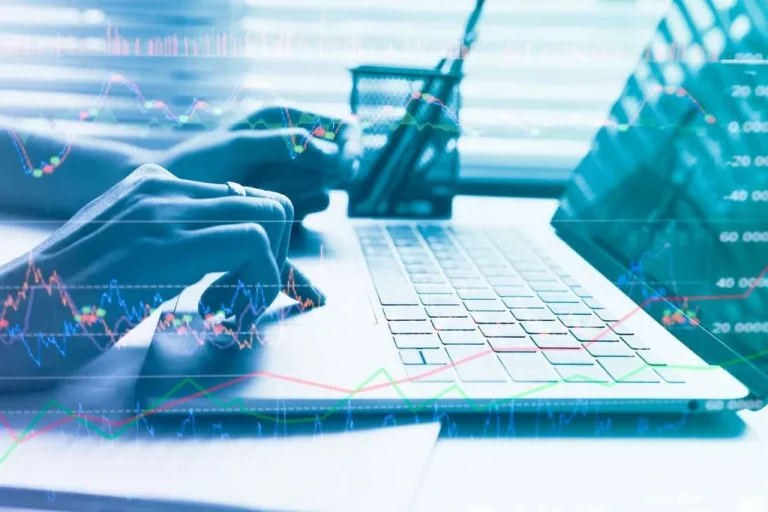Content
A company might have strong liquidity ratios but face declining customer trust. The answer lies in Decentralized finance adopting complementary methods, refining data, and understanding the bigger picture. If we only consider the yearly average, the data might mask these seasonal trends, leading to misinformed inventory planning. Say, for example, that last year, a company’s profitability ratio was healthy.
Fundamental vs Technical Analysis FAQs
Open interest is used in the options and futures market to denote the total number of outstanding contracts that are yet to be settled. Empirical evidence supporting the random walk hypothesis casts doubt on the usefulness of technical analysis. In an efficient and well-ordered market, technical analysis may have limited value. However, technical analysis can still provide valuable insights into imperfect and irrational markets. Like fundamental analysis, technical analysis is subjective and can be influenced by analyst bias. Personal https://www.xcritical.com/ opinions and biases can be reflected in the interpretation of charts and indicators, potentially leading to incorrect conclusions.
How Ratio Analysis Simplifies Financial Data for Decision-Making
Fundamental analysis empowers investors to make sound investment decisions based on the information reviewed and investment facts derived. Choosing between fundamental analysis and technical analysis in trading depends on trading timeline, risk tolerance, difference between fundamental and technical analysis how much information an investor requires to enter the market, and market conditions. Traders choosing between these two analysis methods need to understand the strengths and weaknesses of each and how they will help them achieve their trading aspirations.
Technical Analysis: Features, Objectives, Limitations and How It Works
This phase promotes collaboration, transparency, and continuous communication between team members, enabling them to address any issues or roadblocks promptly. Quadrant 2 involves both manual and automated tests, focusing on testing user interactions, integration, and end-to-end scenarios. It combines exploratory testing, usability testing, and testing through the user interface with automated tests for regression and broader functional coverage. This quadrant focuses on the automation of unit tests, component tests, and other low-level tests. It involves using frameworks and tools to automate the execution of tests and verify the functionality of individual components.
- Just as businesses and the economy move in cycles, the stock market also has seasons.
- Traders identify a probable future direction by observing how an asset’s price has historically responded to certain levels and patterns.
- Technical Analysis is subjective, with different analysts reaching conclusions because it relies on chart patterns, indicators, and trend interpretation.
- Combining them delivers comprehensive insights that enable traders to confidently enter and exit positions profitably.
- Algorithmic stock trading systems scan vast amounts of market data, execute trades far more quickly and efficiently than humans, and minimize the potential for human error.
Susceptibility to False Signals

The engulfing patterns are two-candlestick patterns that indicate possible price reversals. They are classified into bullish and bearish engulfing patterns, depending on where they occur. The bullish engulfing pattern consists of a long bullish candlestick that completely engulfs the preceding bearish candlestick. It occurs during a downswing and is interpreted as a bullish reversal signal. Price action traders make use of many candlestick patterns in their analysis, but here, we will discuss the most common ones.
Technical traders have different ways of using technical analysis, and no two traders have the same approach to technical analysis, even the certified ones. So both the analysis and how it is used are quite subjective, as individuals try to modify several aspects to suit their perceptions and personalities. However, many aspects of technical analysis have been in existence in Japan more than a century before Charles Dow was born. The official group that trains and certify technical analysts is the Market Technicians Association (MTA). Although any trader can learn technical analysis on his own, advanced technical analysts are examined and awarded with the Chartered Market Technicians (CMT) certification by the MTA. The first option is akin to technical analysis, where you look for the right opportunities based on the market’s preference and current trend.
The main benefit of the volume chart is that the rate the bars are being printed depends on the activity in the market. When the market is sluggish, fewer bars are printed, so it can smoothen the price waves, making the direction of the trend more obvious. On the other hand, the data you need for technical analysis takes less time to find.

The commonest way is to draw a horizontal line connecting previous swing highs and swing lows that lie at the same level. This way, you will notice that a level can act as a support if the price is above it and act as resistance if the price is below it. For pure technical traders, however, technical analysis is used to define what constitutes a tradable opportunity — a trade setup.
When we rely on ratio analysis, do we see the full picture of a company’s financial health? To be honest, ratio analysis may be very effective but still has several limiting factors that may blur decision-making. The technical analysis concepts can be applied to stocks like Cabot Oil & Gas (COG), Concho Resources (CXO), EOG Resources Inc. (EOG), and Laredo Petroleum (LPI). Some of these companies are part of the S&P Oil & Gas Exploration & Production ETF (XLE).
A manufacturing firm might operate with a higher debt ratio due to capital-intensive processes. In contrast, a tech company with fewer assets typically has lower debt levels. Since each company uses different accounting methods, comparing their ratios can get a little difficult.
At the same time, a solely quantitative examination of the past may overlook real-world developments with critical economic or geopolitical implications for supply and demand dynamics. An exclusively numerical viewpoint risks becoming detached from underlying fundamental drivers of value over the longer term. Professionals in finance use random forest algorithms to evaluate credit risk for customers, detect fraudulent transactions, and predict stock price movements.
Technical analysis is a method used to evaluate and predict future price movements of financial assets, such as stocks or currencies, by analyzing historical market data, primarily price and volume. Its features include the use of charts and technical indicators like moving averages and relative strength index to identify trends and patterns. The main objective of technical analysis is to forecast future price trends and make informed trading decisions. However, it has limitations, including the potential for subjective interpretations and the assumption that past trading activity can predict future performance. Technical analysis operates on the principle that market psychology influences trading in a predictable manner. Principles of technical analysis delve into the intricate mechanisms of market dynamics, dissecting trends, patterns, and indicators to forecast future price movements.
For example, oscillators like RSI and stochastics frequently signal reversals too late when much of the price move has already happened. Technical Analysis leads to subjective interpretations, and analysts may see different patterns and conclusions. Explore random forests, a popular machine learning algorithm, in more detail by delving into the advantages, disadvantages, and exciting industry applications of this technique.